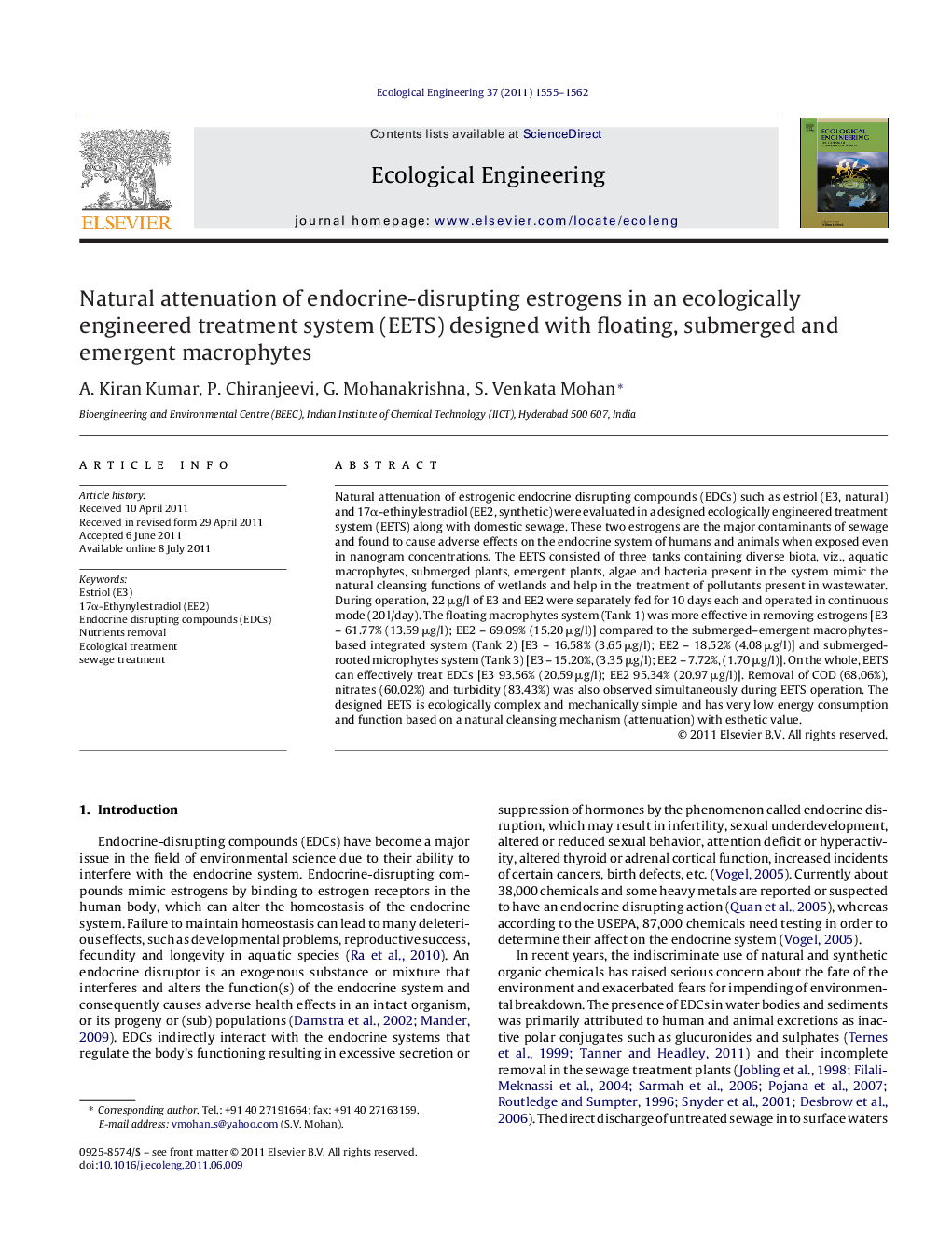| Article ID | Journal | Published Year | Pages | File Type |
|---|---|---|---|---|
| 4390277 | Ecological Engineering | 2011 | 8 Pages |
Natural attenuation of estrogenic endocrine disrupting compounds (EDCs) such as estriol (E3, natural) and 17α-ethinylestradiol (EE2, synthetic) were evaluated in a designed ecologically engineered treatment system (EETS) along with domestic sewage. These two estrogens are the major contaminants of sewage and found to cause adverse effects on the endocrine system of humans and animals when exposed even in nanogram concentrations. The EETS consisted of three tanks containing diverse biota, viz., aquatic macrophytes, submerged plants, emergent plants, algae and bacteria present in the system mimic the natural cleansing functions of wetlands and help in the treatment of pollutants present in wastewater. During operation, 22 μg/l of E3 and EE2 were separately fed for 10 days each and operated in continuous mode (20 l/day). The floating macrophytes system (Tank 1) was more effective in removing estrogens [E3 – 61.77% (13.59 μg/l); EE2 – 69.09% (15.20 μg/l)] compared to the submerged–emergent macrophytes-based integrated system (Tank 2) [E3 – 16.58% (3.65 μg/l); EE2 – 18.52% (4.08 μg/l)] and submerged-rooted microphytes system (Tank 3) [E3 – 15.20%, (3.35 μg/l); EE2 – 7.72%, (1.70 μg/l)]. On the whole, EETS can effectively treat EDCs [E3 93.56% (20.59 μg/l); EE2 95.34% (20.97 μg/l)]. Removal of COD (68.06%), nitrates (60.02%) and turbidity (83.43%) was also observed simultaneously during EETS operation. The designed EETS is ecologically complex and mechanically simple and has very low energy consumption and function based on a natural cleansing mechanism (attenuation) with esthetic value.
